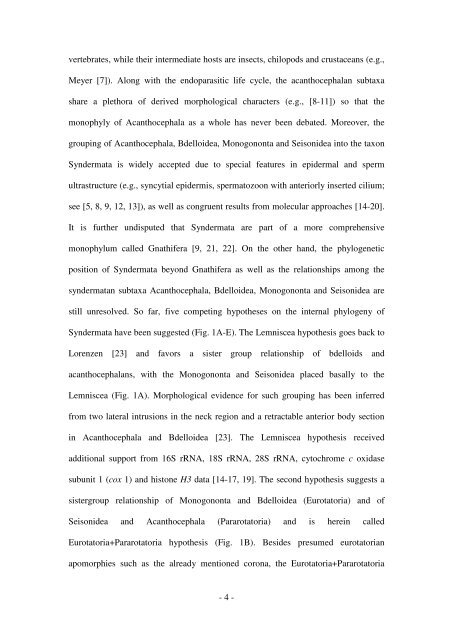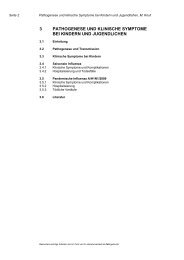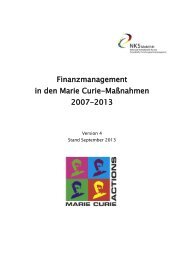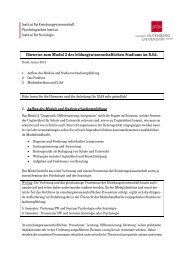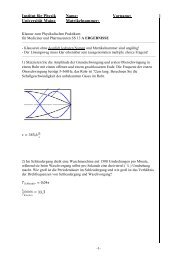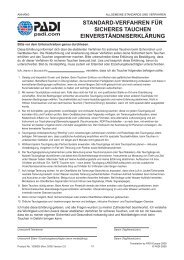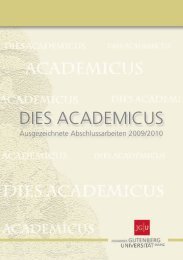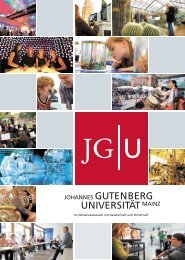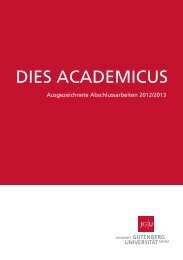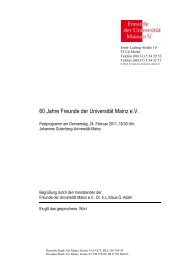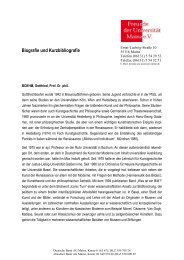BMC Evolutionary Biology - Johannes Gutenberg-Universität Mainz
BMC Evolutionary Biology - Johannes Gutenberg-Universität Mainz
BMC Evolutionary Biology - Johannes Gutenberg-Universität Mainz
Create successful ePaper yourself
Turn your PDF publications into a flip-book with our unique Google optimized e-Paper software.
vertebrates, while their intermediate hosts are insects, chilopods and crustaceans (e.g.,<br />
Meyer [7]). Along with the endoparasitic life cycle, the acanthocephalan subtaxa<br />
share a plethora of derived morphological characters (e.g., [8-11]) so that the<br />
monophyly of Acanthocephala as a whole has never been debated. Moreover, the<br />
grouping of Acanthocephala, Bdelloidea, Monogononta and Seisonidea into the taxon<br />
Syndermata is widely accepted due to special features in epidermal and sperm<br />
ultrastructure (e.g., syncytial epidermis, spermatozoon with anteriorly inserted cilium;<br />
see [5, 8, 9, 12, 13]), as well as congruent results from molecular approaches [14-20].<br />
It is further undisputed that Syndermata are part of a more comprehensive<br />
monophylum called Gnathifera [9, 21, 22]. On the other hand, the phylogenetic<br />
position of Syndermata beyond Gnathifera as well as the relationships among the<br />
syndermatan subtaxa Acanthocephala, Bdelloidea, Monogononta and Seisonidea are<br />
still unresolved. So far, five competing hypotheses on the internal phylogeny of<br />
Syndermata have been suggested (Fig. 1A-E). The Lemniscea hypothesis goes back to<br />
Lorenzen [23] and favors a sister group relationship of bdelloids and<br />
acanthocephalans, with the Monogononta and Seisonidea placed basally to the<br />
Lemniscea (Fig. 1A). Morphological evidence for such grouping has been inferred<br />
from two lateral intrusions in the neck region and a retractable anterior body section<br />
in Acanthocephala and Bdelloidea [23]. The Lemniscea hypothesis received<br />
additional support from 16S rRNA, 18S rRNA, 28S rRNA, cytochrome c oxidase<br />
subunit 1 (cox 1) and histone H3 data [14-17, 19]. The second hypothesis suggests a<br />
sistergroup relationship of Monogononta and Bdelloidea (Eurotatoria) and of<br />
Seisonidea and Acanthocephala (Pararotatoria) and is herein called<br />
Eurotatoria+Pararotatoria hypothesis (Fig. 1B). Besides presumed eurotatorian<br />
apomorphies such as the already mentioned corona, the Eurotatoria+Pararotatoria<br />
- 4 -


